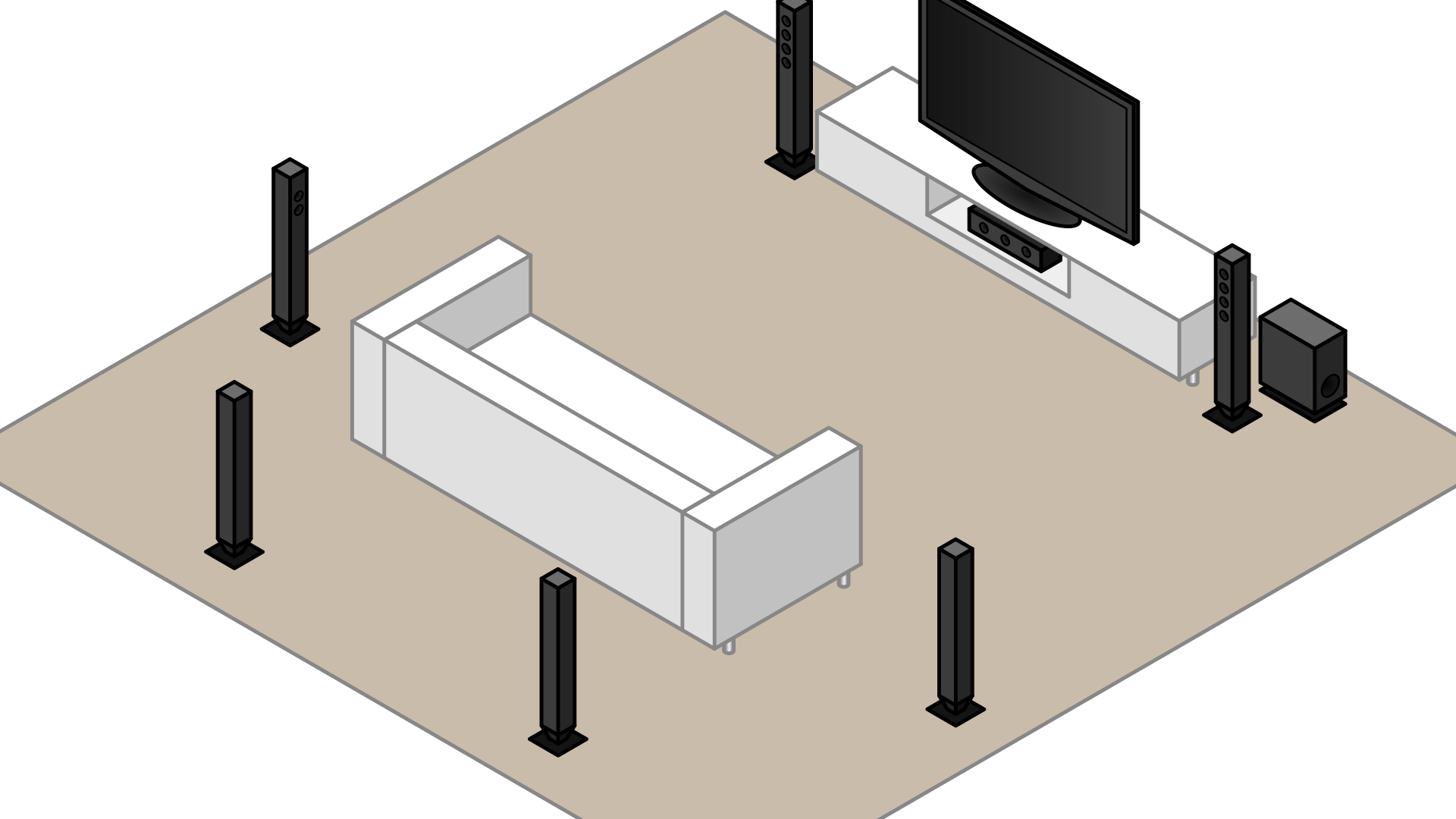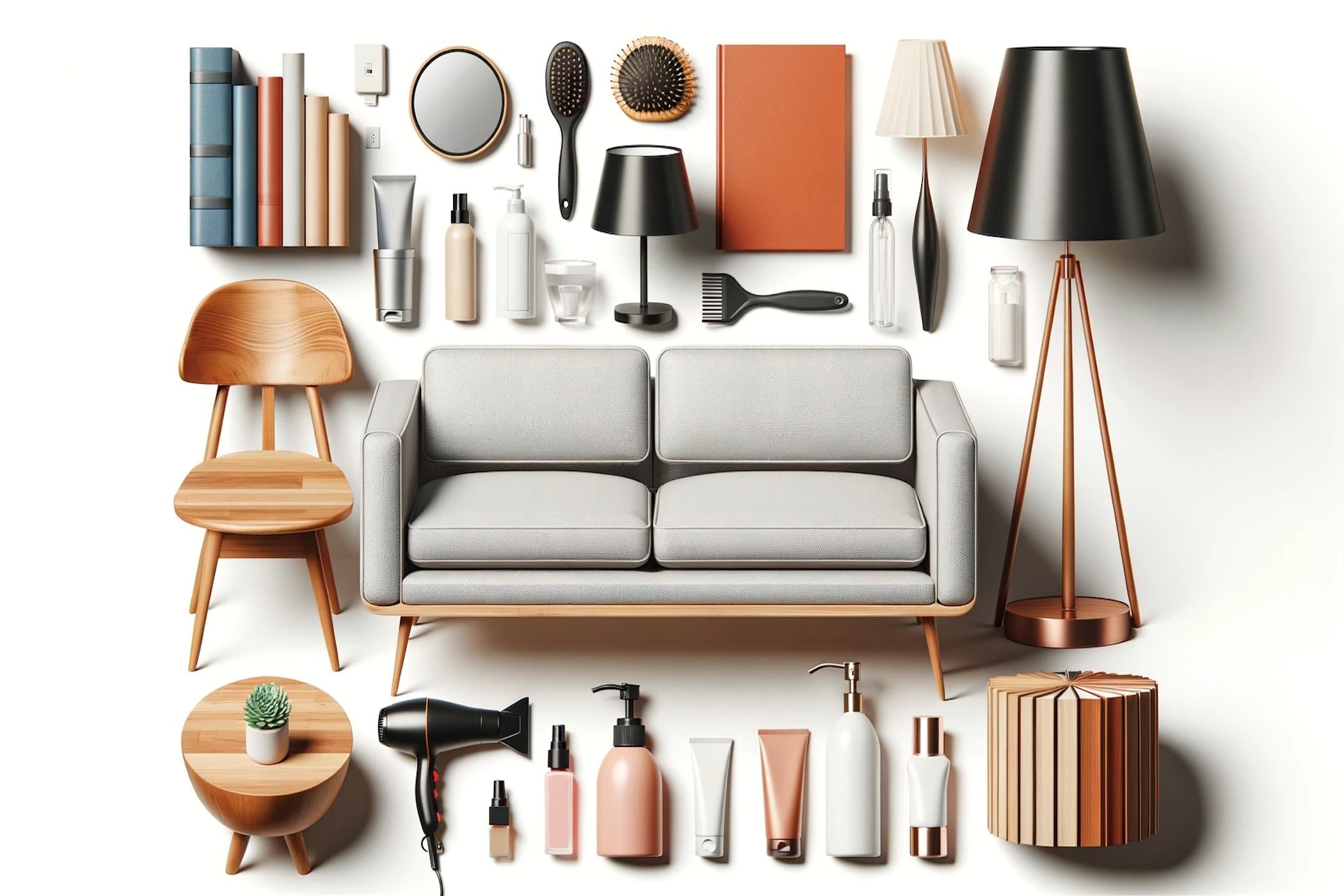Key Takeaways
- A room’s layout impacts sound waves, which is why you should adjust furniture for better performance.
- Identify prime listening zones to find the ideal speaker placement
- Alter furniture layout depending on the room’s size and surfaces to absorb sound and eliminate echoes and reflections.
Living room audio requires more than high-quality speakers—it takes some creativity as well! To fine-tune a surround system, you need to take a room’s entire layout into account, adjusting each speaker’s position and angle, as well as shuffling furniture around to create a more balanced sound.
As someone who has moved numerous times, and is never satisfied when it comes to sound, I’ve tinkered a lot in this area, and have learned a thing or two.
From the Ceiling to the Rug, a Room’s Layout Effects Acoustics
Sound travels via physical vibrations, known as waves. As sound waves travel, they either reflect off a room’s surfaces or are absorbed by the objects they come into contact with. In essence, this means that, in some way, every object in a room affects the flow of sound, and your furniture layout can either enhance or detract from the audio performance.
I’ve been through the wringer figuring out what has the largest impact on a room’s sound. Of course, you could go mad trying to adjust everything. Trust me, I’ve tried, and I don’t recommend it! Still, it’s worthwhile focusing on the main elements of your room’s furniture layout, because even minor adjustments can make significant changes to how your sound travels and reverberates through your house.
Get to Know Your Room’s Prime Listening Zones
Every room has “listening zones,” that depend on the room’s size and dimensions, and these zones indicate how you should position speakers for the best frequency response. To find your prime spots, I recommend using an application, like Soundton, which lets you plug in your room’s exact dimensions and speaker setup, then crunches the information, and spits out a frequency response graph that identifies the ideal speaker placement for the most balanced sound.
Keep in mind, that I use an app as a jumping-off point to get speakers in an approximate good place. However, every room is unique, and you’ll need to make alterations and balance the audio, which includes adjusting EQ settings like bass and treble, along with the physical placement.
You can also try using the so-called “rule of thirds,” which basically means splitting your room into three even segments, by drawing two invisible, equidistant lines. Then, you place the speakers along the first line, and your seating area along the second line, ensuring they are spaced evenly, as this gives you a more balanced distribution of sound. But again, this is merely an approximation, as balance always depends on the shape and size of your room.
Positioning Your Subwoofer
Positioning matters most when it comes to your subwoofer, since keeping your speakers away from the wall helps reduce resonant frequencies and gives a clearer bass response. At a bare minimum, subwoofers should be at least 6 inches away from the wall.
If you’re having trouble, try finding a spot for the woofer that’s one fifth the length of the room from the wall. But you can also adjust your listening position in relation to the speaker as well, meaning if you have great spot for the bass speaker, you can adjust your couch or chair to optimize proximity to achieve better tonal balance.
How I Arrange My Furniture to Improve TV Audio
Finding your prime listening zones is priority number one, as this gives you a good baseline blueprint for speaker organization. Afterward, you can inspect your furniture layout to ensure it’s not hurting sound quality, and these are a few of the main things I begin with.
Move the Coffee Table and Bookshelves
Your coffee table can seriously blemish your speaker’s center channel, causing audio to reflect off its surface, muddying the output, and making dialogue harder to hear. Even the material of your coffee table matters. For example, glass creates harsher reflections compared to soft wood or cloth. I believe in removing as many objects between you and the speakers as possible, as an unobstructed path from the couch to the speaker gives you the best chances of balanced audio.
I’d also advise moving any bookcases up against the wall, which can act as a soundproofing layer, rather than a large object that hinders sound flow. The more books you have the more they’ll absorb sound, so maybe it’s time to consider expanding your library.
Always be aware of your subwoofer’s placement in relation to your room’s layout, given bass frequencies are the primary culprit for creating extra chatter, buzzes, hums, and vibrations. Try to keep a clear path so that your bass speaker is pointed toward the main listening area without anything in its path.
Put a Rug Between Left and Right Speakers
If you’re in a room with hardwood floors, the floor itself could result in unwanted sound reflections, similar to a coffee table. As a solution, try placing a rug between the speakers to reduce reflections—the thicker, the better!
Here’s an equation I’ve committed to memory: Woofers plus hardwood floors equals trouble. As a solution, try placing a thick mat or rug underneath the subwoofer, as it can greatly reduce floor buzzing.
Close Those Drapes
Similar to the rug principle, drapes can be used to improve your sound. If you have thick cloth drapes, drawing them can help absorb sound waves and keep them from reflecting off of glass windows, which harms sound quality. There are even dedicated noise-blocking drapes you can buy that absorb interior sound and block out ambient noise from outside.
When I made these slight changes, I noticed an immediate difference, such as fewer echoes, less outside noise, and less chatter from vibrations. You’ll need to play around with things yourself given everyone has a different setup, but it’s a worthwhile and fun process to engineer furniture layout to benefit sound.






